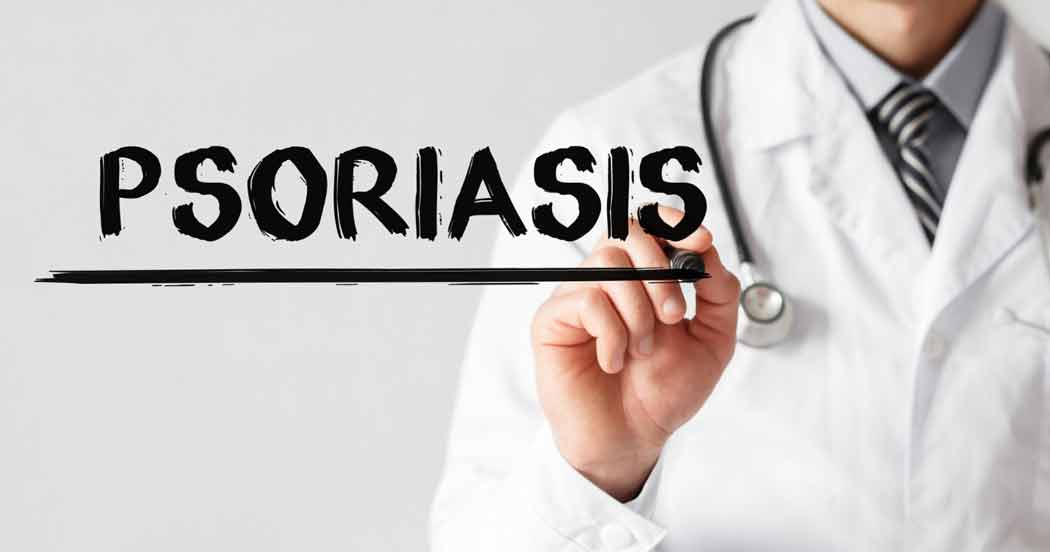Plaque Psoriasis
This is the most prevalent form of psoriasis and appears as raised, red patches or lesions covered with a silvery white build-up of dead skin cells, called scale. About 80% of those who have psoriasis have this type. It is typically found on the elbows, knees, scalp and lower back.
Pustular Psoriasis
Primarily seen in adults, pustular psoriasis is characterized by white blisters of noninfectious pus – consisting of white blood cells – surrounded by red skin. It is not an infection, nor is it contagious. There are three types of pustular psoriasis:
- Von Zumbusch – The onset of Von Zumbusch pustular psoriasis can be abrupt. The condition begins with the development of reddened, painful and tender skin over much of the body, followed in a matter of hours by pustules. Over the next 24 to 48 hours, the pustules then dry and peel, leaving the skin with a glazed, smooth appearance. A fresh crop of pustules may then appear. Eruptions often come in waves that last days or weeks.
- Palmoplantar Pustulosis – This is a type of psoriasis that causes pustules on the palms of the hands and soles of the feet. It is characterized by multiple pustules the size of pencil erasers in fleshy areas of the hands and feet, such as the base of the thumb and the sides of the heels. The pustules appear in a studded pattern throughout reddened plaques of skin, then turn brown, peel and become crusted. The course of this type of psoriasis is usually cyclical, with new crops of pustules followed by periods of low activity.
- Acropustulosis – This rare type of psoriasis is characterized by skin lesions on the ends of the fingers and sometimes the toes. The eruption occasionally starts after an injury to the skin or infection. Often the lesions are painful and disabling, producing deformity of the nails. Bone changes can occur in severe cases. Pustular psoriasis may be localized to certain areas of the body, such as the hands and feet, or covering most of the body. It begins with the reddening of the skin followed by formation of pustules and scaling.
Inverse Psoriasis
Inverse psoriasis is found in the armpits, groin, under the breasts, and in other skin folds around the genitals and the buttocks. It is common to have another type of psoriasis elsewhere on the body. Inverse psoriasis appears as bright-red lesions that are smooth and shiny. It is subject to irritation from rubbing and sweating because of its location in skin folds and tender areas. It can be more troublesome in overweight people and those with deep skin folds.
Guttate Psoriasis
Guttate psoriasis is a form of psoriasis that often starts in childhood or young adulthood. The word guttate is from the Latin word meaning “drop.” This form of psoriasis appears as small, red, individual spots that look like drops on the skin. Guttate lesions usually appear on the trunk, limbs and scalp. These spots are not usually as thick as plaque lesions.
Guttate psoriasis often comes on quite suddenly. A variety of conditions can bring on an attack of guttate psoriasis, including upper respiratory infections, streptococcal throat infections (strep throat), tonsillitis, stress, injury to the skin and the administration of certain drugs including antimalarials and beta-blockers.
Erythrodermic Psoriasis
Erythrodermic psoriasis is a particularly inflammatory form of psoriasis that affects most of the body surface. It may occur in association with Von Zumbusch pustular psoriasis. It is characterized by periodic, widespread, fiery redness of the skin and the shedding of scales in sheets, rather than smaller flakes. The reddening and shedding of the skin are often accompanied by severe itching and pain, heart rate increase, and fluctuating body temperature. It is the least common type of psoriasis and may occur once or more during a lifetime in 1% to 2% of people who develop psoriasis. It generally appears on people who have unstable plaque psoriasis. This means the lesions are not clearly defined. Fiery redness and exfoliation of the skin characterize this form along with severe itching and pain.
People experiencing the symptoms of erythrodermic psoriasis flare should go see a doctor immediately. Erythrodermic psoriasis causes protein and fluid loss that can lead to severe illness. The condition may also bring on infection, pneumonia and congestive heart failure. People with severe cases of this condition often require hospitalization.
